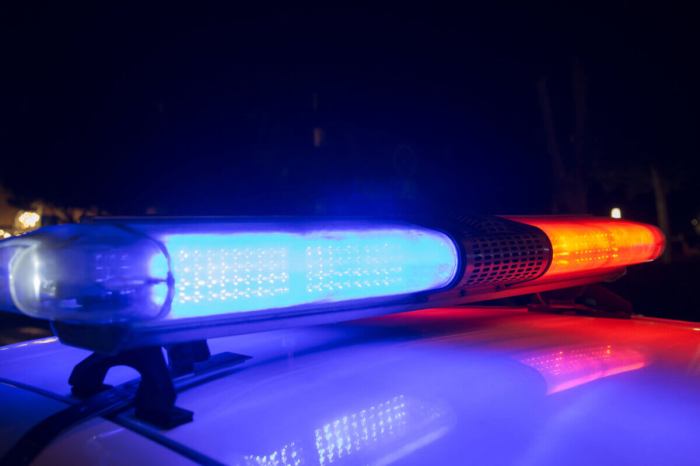
No working smoke detectors were found in the Trump Tower apartment where art dealer Todd Brassner died in a fire, the FDNY said on Monday.
The 67-year-old art dealer died from smoke inhalation after a blaze broke out on Saturday in the apartment he owned on the 50th floor of the Fifth Avenue building.
In older buildings like Trump Tower, apartment owners are responsible for ensuring smoke alarms are functioning, according to the Department of Buildings.
The FDNY said the flames did not spread to other parts of the building, which was constructed before sprinkler systems were required.
The cause of the fire remains under investigation.
New York City requires sprinklers in residential buildings with at least four units constructed after 1999 — or buildings with three or more units if they were built in 2008 or later, according to the Department of Buildings.
Councilman Robert Cornegy Jr., who chairs the Housing and Building Committee, said Monday that he would draft legislation extending the sprinkler mandate to all residences with four or more units, regardless of when they were built.
The DOB estimated 124,000 buildings would need to add sprinklers under Cornegy’s proposal.
Cornegy plans to come up with a timeline for implementing the mandate while working with landlords and other stakeholders, and will consider ways to help budget-strapped landlords if city resources allow for it, his office said.
“Above all else, as a public servant I’d like to think, and I’m naive enough to think, that he would be concerned that someone lost their lives based on a loophole,” Cornegy said of Trump. “We all, at our core, are here to serve, including President Trump. So I’d like to think if we had a chance to sit and talk, I could get him to understand the importance of actually supporting the idea that we would lift this and change this law.”
The Trump Organization declined to comment on the record about Cornegy’s proposal and where sprinklers are installed in Trump Tower.
Trump Tower, which houses the president’s primary, private residence on the top three floors and offices on some of the lower floors, must install sprinklers in all commercial spaces by July 1, 2019, according to the city Department of Buildings.
Research shows the death rate per 1,000 fires between 2010 and 2014 was 87 percent lower in properties with fire sprinklers than in those with no automatic extinguishing systems, according to the New York Fire Sprinkler Council, which represents workers who inspect, test and maintain fire-suppression systems. The group noted that sprinklers contained the flame damage to the room of origin in 97 percent of fires.
Cornegy’s proposal would cost about $8 to $12 per square foot, according to Tony Saporito, executive vice president of the council. He said the retrofitting work could be more expensive in residential buildings constructed before 1978, where lead and asbestos risks may require additional attention.
Beyond cost concerns, the installation process would be cumbersome, according to Frank Ricci, director of government affairs for the Rent Stabilization Association, which represents landlords of buildings with rent-regulated units.
“It’s not just putting in the sprinklers, it’s cutting up every ceiling and wall in a building to put in the sprinkler system. So there’s a lot of collateral damage,” Ricci said. “For a lot of rental buildings, it’s going to be a cost that can be passed onto the tenants — it’s going to be a major cost.”
Another landlord trade group, the Real Estate Board of New York, mentioned the proposal may impose additional requirements on buildings, such as acquiring larger water tanks, stronger roofs to support them and other, additional equipment.
“The City’s Building Code has proven to be effective at significantly preventing fires in high rise multifamily housing or limiting their impact to a single residential unit in a building. Whether or not additional laws or steps are warranted should be based upon analysis of data as to how often such fires occur, in what types of structures they occur, and the practical physical challenges of implementing such laws or steps,” the board’s president, John Banks, said in a statement.
Cornegy said he aimed to prevent residents from shouldering the cost of installing sprinklers.
The FDNY had staff distribute safety information inside the lobby of Trump Tower on Monday.
Saturday’s fire was not the first time the Trump Organization has been in the spotlight for fire-related regulations.
In the late 1990s, Trump lobbied City Council members to oppose sprinkler requirements, and said he could not afford to install the equipment in all of his buildings, according to a New York Post report.
In May 2001, city building inspectors investigated allegations that sprinklers were being installed in Trump Tower without proper permits, but closed the complaint due to insufficient information, according to the city Department of Buildings. There were several active permits for sprinkler work at the time, but it remains unclear how much, if any, of the permitted work was done.
Aaron Carr, founder and executive director of the Housing Rights Initiative, voiced concern about the accusations of performing work without a permit at Trump Tower. There are currently six open “work without a permit” violations at Trump Tower, according to city Department of Buildings records.
“I think performing work without permits is a major safety issue,” said Carr. “I can say that it’s not a good sign when over a long period of time tenants are complaining about these sorts of issues.”
The Trump organization did not respond to requests for comment about the open violations.































